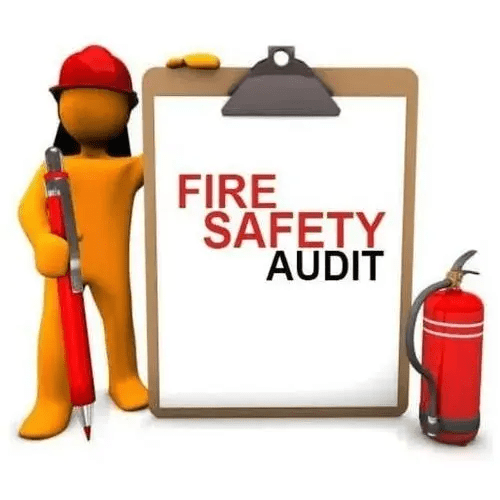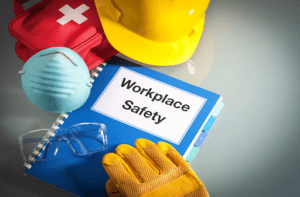Fire and Life Safety Audit Common Findings and Critical Issues


Table of Contents
Fire and life safety audit are crucial assessments conducted to ensure that buildings and facilities meet established fire safety standards, aiming to protect lives and prevent property damage. These audits scrutinize various elements, from structural integrity to emergency response capabilities, against a comprehensive fire safety audit checklist. Despite the widespread implementation of safety regulations, common findings and critical issues persist across many audits. This blog delves into these findings, offering insights into the nature of these problems and proposing measures to address them.
Common Findings in Fire and Life Safety Audit
1. Inadequate Fire Detection and Alarm Systems:
One of the most frequent observations in a fire safety audit report is the lack of adequate fire detection and alarm systems. Many facilities fail to install sufficient smoke detectors or maintain them properly, leading to potential delays in fire detection and response.
2. Insufficient Fire Extinguishing Equipment:
Another common issue is the insufficient availability or improper maintenance of fire extinguishing equipment. This includes not only fire extinguishers but also sprinkler systems that are not regularly inspected or tested, compromising their functionality.
3. Blocked Emergency Exits and Escape Routes:
A critical finding often highlighted in fire safety audit reports is the obstruction of emergency exits and escape routes. This can significantly hinder evacuation efforts during an emergency, increasing the risk of casualties.
4. Lack of Fire Safety Training:
The absence of regular fire safety training for occupants and staff is a significant concern. Without proper training, individuals may not know how to respond effectively in the event of a fire, leading to panic and potential harm.
5. Non-Compliance with Fire Safety Regulations:
Many audits reveal a general non-compliance with local fire safety regulations. This ranges from inadequate fire separation and protection measures to the absence of a fire safety audit certificate, indicating a failure to meet the required standards.
Read More: Online HSE courses with certificates | iosh safety course
Addressing Critical Issues
To mitigate these issues, organizations must undertake comprehensive measures, starting with a thorough review of the fire safety audit checklist and ensuring all aspects are adequately addressed. Regular maintenance and testing of fire detection and suppression systems are imperative. Additionally, clear emergency exits and escape routes must be maintained at all times, coupled with ongoing fire safety training for all occupants and staff to ensure preparedness.
Beyond the primary concerns identified during fire and life safety audit, there are additional critical issues that demand attention to further enhance safety and compliance.
Poor Maintenance of Electrical Systems: Electrical faults are a leading cause of fires, yet audits frequently uncover that electrical systems are poorly maintained. Regular inspections, adherence to electrical codes, and prompt repairs are essential to mitigate this risk.
Storage of Flammable Materials: Improper storage of flammable materials is another common finding. These materials should be stored in designated, secure areas away from ignition sources, and their handling protocols must be strictly followed to prevent accidents.
Ineffective Fire Safety Management: The effectiveness of a fire safety strategy significantly depends on the management’s commitment. Often, audits reveal a lack of clear fire safety policies, insufficient allocation of resources for safety measures, and inadequate oversight, which can all compromise the effectiveness of fire safety measures.
Lack of Fire Doors or Compromised Integrity: Fire doors play a crucial role in preventing the spread of fire and smoke. However, audits sometimes find absent, damaged, or improperly maintained fire doors, which can severely impact the building’s overall fire safety.
Addressing these issues requires a holistic approach to fire and life safety, emphasizing not just compliance but a culture of safety that permeates every level of an organization. Investments in regular training, maintenance, and the development of comprehensive fire safety policies are essential steps towards mitigating the risks identified in fire safety audit reports and ensuring the safety and well-being of all occupants.
FREQUENTLY ASKED QUESTIONS
A fire and life safety audit is a thorough examination of a building’s fire safety measures and procedures to ensure compliance with fire safety standards and to protect occupants and property from the risks of fire.
A fire safety audit certificate is crucial as it verifies that a facility has undergone a comprehensive fire safety audit and meets the required fire safety standards, ensuring the safety of its occupants.
The frequency of fire safety audits can vary depending on local regulations and the specific risks associated with a facility. However, it is generally recommended to conduct an audit annually to ensure ongoing compliance with fire safety standards.
A fire safety audit checklist typically includes the inspection of fire detection and alarm systems, fire extinguishing equipment, emergency exits and escape routes, fire safety training records, and compliance with local fire safety regulations.
Organizations can prepare for a fire safety audit by regularly reviewing and updating their fire safety measures, ensuring all fire safety equipment is maintained and functional, conducting fire drills, and providing regular training to staff and occupants on fire safety procedures.






